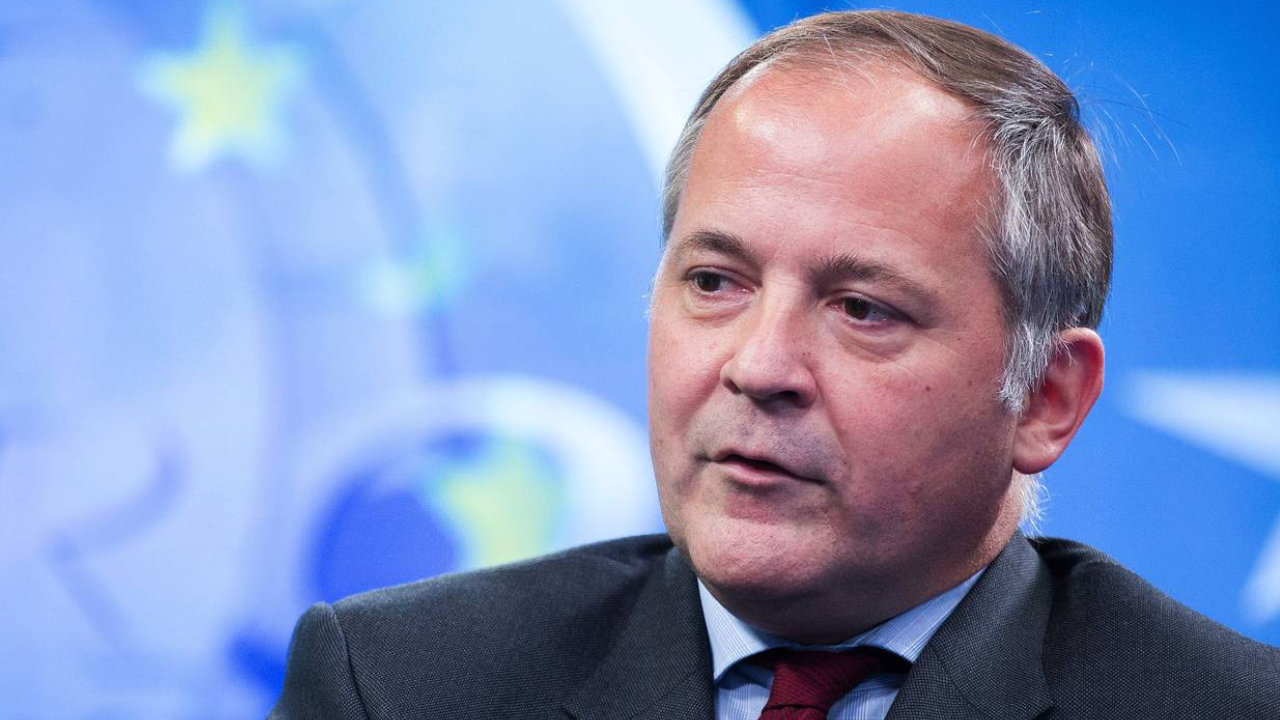 On Feb. 12, 2023, the Central Bank of the United Arab Emirates (CBUAE) announced the launch of a new initiative called the “Financial Infrastructure Transformation Program,” which has nine key objectives. One of these objectives is the research and development of a central bank digital currency (CBDC) designed to address both cross-border payments and domestic […]
On Feb. 12, 2023, the Central Bank of the United Arab Emirates (CBUAE) announced the launch of a new initiative called the “Financial Infrastructure Transformation Program,” which has nine key objectives. One of these objectives is the research and development of a central bank digital currency (CBDC) designed to address both cross-border payments and domestic […]
The country's central bank will begin studying two possible cross-border CBDC settlement models this quarter.
Russia’s central bank is reportedly set to begin developing a cross-border settlement system using its Central Bank Digital Currency (CBDC) amid ongoing sanctions in response to its invasion of Ukraine.
The plans to move forward with Russia’s digital ruble are expected to come in the first quarter of 2023 and will see Russia's central bank study two possible cross-border settlement models, according to a Jan. 9 report from local media outlet Kommersant.
The first proposed model sees various countries entering into separate bilateral agreements with Russia to integrate their CBDC systems.
Each agreement would be made to ensure the conversion and transfer of assets between the countries are in accordance with the rules of the agreements.
The second, more complicated model proposes a single hub-like platform for Russia to interact with other countries, sharing common protocols and standards to facilitate payments between the connected countries.

Roman Prokhorov, the head of the board of the Financial Innovations Association (AFI) opined that the first model was more simple to implement but less promising for bilateral interactions between countries.
The other option was more “advanced” and he considered an initial two-way system may be implemented with China as the most likely partner for its “technological and political readiness.”
Earlier reports in Sep. 2022 claimed Russia was planning to use its digital ruble for settlements with China by sometime in 2023.
Still, others believe Russia’s CBDC play won't be hamstrung by technology, but rather by politics.
Vice President of the Association of Banks of Russia, Alexey Voylukov, said introducing a digital ruble won’t change or improve Russia’s global political situation and trials for the CBDC platform can only be undertaken with Russian government-friendly countries who are technologically ready.
Related: Crypto regulation world: How laws for digital assets changed in 2022
Previously, the Bank of Russia said it was looking to roll out its digital ruble by 2024, with all banks and credit institutions connected to the CBDC’s platform.
Russia has faced mounting financial and trade sanctions since its escalation of the Russo-Ukrainian war when it launched a full-scale invasion of Ukraine in late-February 2022.
It’s since tried to enact policies, or pondered ways to skirt the sanctions such as the central bank considering the use of cryptocurrencies in the country “only to support foreign trade.”
The Bank of Russia and the Ministry of Finance came to an agreement in Sep. 2022 on a rule allowing Russians to send cross-border payments using crypto.

The underlying tech of a central bank digital currency wasn’t enough to convince some panelists at a Fed conference that it could change the international currency system.
A note published by the United States Federal Reserve on a recently held conference found a majority of exports believe a U.S. dollar central bank digital currency (CBDC) would not drastically change the global currency ecosystem.
Panelists at the conference also agreed CBDC development outside of the U.S. doesn’t threaten the status of the dollar, but th development of cryptocurrencies could alter the role of the dollar globally, with some saying stablecoins could even boost the U.S. dollar's role as the global dominant reserve currency.
The assessments came from expert panelists at a June 16 and 17 conference hosted by the Federal Reserve on the “International Roles of the U.S. dollar” collated into a note and published by The Fed on July 5. The conference was used to gain insight from policymakers, researchers, and market experts to understand “potential factors that may alter the dominance of the U.S. dollar in the future” including new technologies and payment systems.
A discussion on a panel addressing digital assets and if CBDCs would provide advantages for the dollar had panelists agree that the underpinning technology alone wouldn’t “lead to drastic changes in the global currency ecosystem”.
Speakers on the panel included digital currency initiative director at MIT, Neha Narula, head of research at the Bank of International Settlements, Hyun Song Shin, chief investment strategist at asset management firm Bridgewater, Rebecca Patterson and HSBC bank’s head of FX research Paul Mackel.
The panelists agreed that factors such as market and political stability, along with market depth, are more crucial for dominant reserve currencies like the U.S. dollar that the development of a Fed issued digital dollar.
The development of CBDCs by other countries was also generally agreed by the panel to have a tendency to focus more heavily on that country’s own domestic retail market, and therefore was considered “not a threat to the U.S. dollar's international status”.
The Federal Reserve noted the amount and scope of CBDC’s for making cross-border payments is “still quite limited”, suggesting that these systems don’t yet pose a threat to the dollar, which accounts for a majority of international financial transactions according to an October 2021 note.
Focusing on cryptocurrencies, panelists said further development of digital assets could change the international role of the dollar, but adoption by institutional investors was throttled by a lacking regulatory framework, leaving the current crypto market to be dominated by speculative retail investors.
Another panel including Fed financial research advisor Asani Sarkar and finance professor Jiakai Chen, concluded that part of the demand for crypto, especially Bitcoin (BTC), was driven by a desire to evade domestic capital controls, citing BTC prices in China trading at a premium in comparison to other countries.
Despite this, the Fed says panelists didn’t see crypto as a threat to the global role of the dollar in the short term. Some even suggested in the “medium run” that crypto could reinforce the dollars' role if “new sets of services structured around these assets are linked to the dollar”, a likely reference to stablecoins, cryptocurrencies pegged to the value of a fiat currency (usually USD.)
Related: US lawmaker lays out case for a digital dollar
The advice by panelists may help put a new spin on things for members of the Federal Reserve.
Previously, the Federal Reserve Board of governors said in June that stablecoins not sufficiently backed by liquid assets and proper regulatory standards “create risks to investors and potentially to the financial system” likely referencing the collapse of TerraUSD Classic (USTC).
The comment by the Board came before Federal Reserve chair Jerome Powell stated a CBDC could “potentially help maintain the dollar’s international standing”.
 The head of the Bank of International Settlements (BIS) Innovation Hub, Benoît Cœuré, has urged central banks to act now on central bank digital currencies (CBDCs) to compete with initiatives in the private sector, including cryptocurrencies. “CBDCs will take years to be rolled out, while … crypto assets are already here,” he said. BIS Says […]
The head of the Bank of International Settlements (BIS) Innovation Hub, Benoît Cœuré, has urged central banks to act now on central bank digital currencies (CBDCs) to compete with initiatives in the private sector, including cryptocurrencies. “CBDCs will take years to be rolled out, while … crypto assets are already here,” he said. BIS Says […]